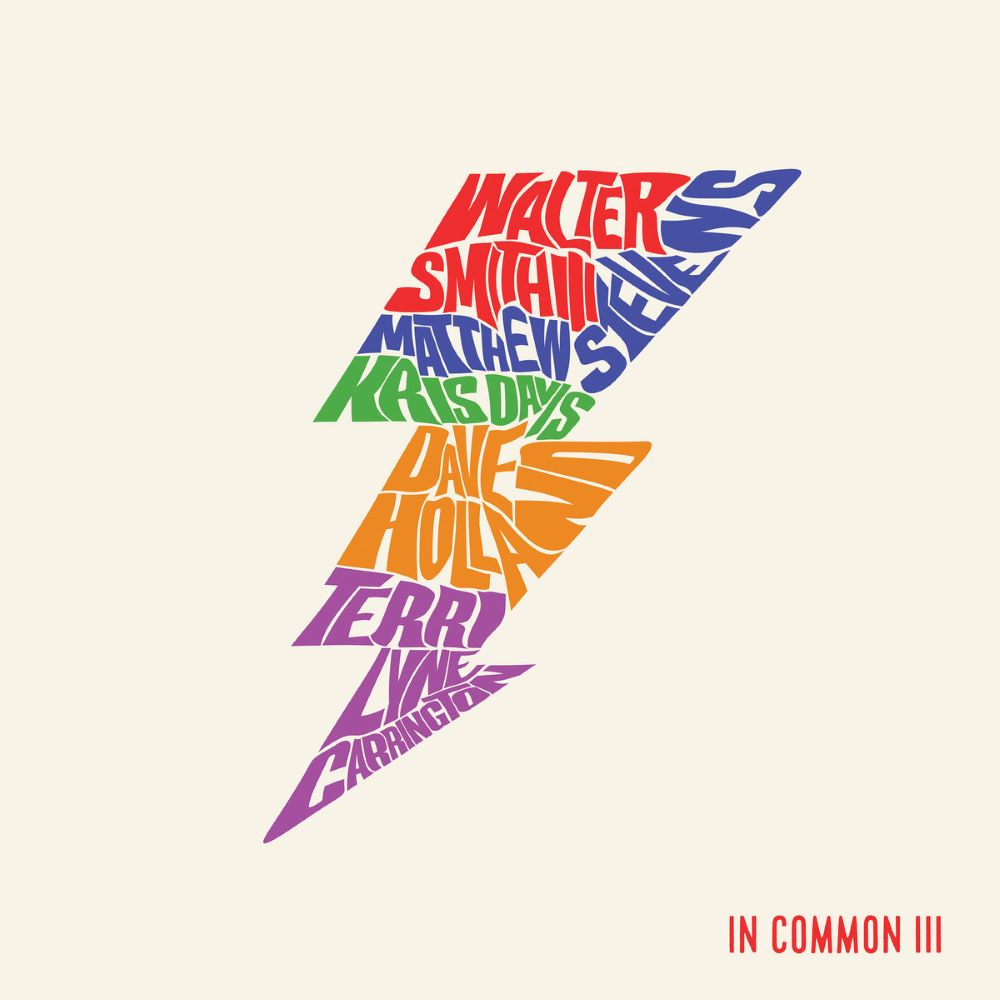Walter Smith III and Matthew Stevens are two musicians at the forefront of developments in jazz and improvised music, listing the likes of Terence Blanchard, Ambrose Akinmusire, Esperanza Spalding and Christian Scott as collaborators. The pair started working together in 2017, and four years later, they’re back for the third iteration of their highly commended In Common project. Previous guests include Nate Smith, Linda May Han Oh and Marcus Gilmore; on In Common 3, Kris Davis takes the piano chair vacated by Micah Thomas, and completing the lineup are two legends of the game – Dave Holland and Terri Lyne Carrington.
What’s new, third time around? “It’s longer, freer, and yet more spontaneous,” says Smith. The successful In Common formula – inventive ‘one-page songs’ written with specific musicians in mind – disguises the through-line that uniquely shapes this record: “The spotlight is on the community of musicians as a whole,” Smith comments. “The general vibe is sculpted by the musicians’ interpretations of what we bring in.” Davis’ influential presence means the project leans into the aesthetics of free improvisation for the first time; the resulting soundworld lends itself to electronic manipulation, another first for the series. The span of fifteen tracks showcases the duo’s knack for reinvention, slipping into unfamiliar contexts without losing sight of the album’s focused essence.
Smith is keen to emphasise the standalone nature of the divergent In Common recordings. Some aspects carry through though, like their commitment to remembering lost influences – opener ‘Shine’ serves as both a thank you and an acknowledgement to McCoy Tyner, Wallace Roney, Chick Corea, Jimmy Health and Ellis Marsalis. That introduces the remaining fourteen tracks, that divide nearly exactly into spontaneously constructed ideas that introduce fully composed tracks.
‘Loping’ was Stevens’ part-tribute to Carrington and Holland: “being of a certain ilk and having come up a certain way, I knew they would have had a specific way of playing this track” – Smith and Stevens feature in their trademark coolly cast melodic divisi. The single riff of ‘Oliver’ dissolves into ‘Hornets’s slinky groove, where we catch a glimpse of the sense of humour amongst the group. ‘Orange Crush’ squeezes all the juice out of a lop-sided ostinato, a concentration of the In Common philosophy into a three-minute segment. Then comes ‘After’, which captures Smith’s “never-ending optimistic thoughts about things being better ‘after’” – the opaque whirrs of the ensuing ‘Lite’ show that outcomes are far from clear-cut.
‘For Some Time’ does provide Smith with some closure, however – a timeworn composition that “finally finds a solidified direction amongst this quintet,” as Carrington and David jostle for position. ‘Reds’ sees Stevens back to Holland’s 1990 album ‘Extensions’, and “those big beat, odd meter songs.” ‘Variable’ involved Smith venturing into non-determinacy – “it’s written to be played in many tempos, meters, and approaches, but was not discussed prior to recording it” – and, via ‘Dust’s twanging landscapes and ‘Familiar’s misty acquaintance, In Common 3 concludes with the pensive ‘Miserere’, an aptly reflective conclusion to this wide-ranging endeavour.
1. Shine
2. Loping
3. Oliver
4. Hornets
5. Orange Crush
6. After
7. Lite
8. For Some Time
9. Shutout
10. Reds
11. Variable
12. Prince July
13. Dust
14. Familiar
15. Miserere
Walter Smith III - saxophone
Matt Stevens - guitar
Kris Davis - piano
Dave Holland - bass
Terri Lyne Carrington - drums
Recorded at Clubhouse (June 4-6 2021)
Mixed by Jay Dudt
Mastered by Jay Dudt & Jesse Naus
Produced by Matthew Stevens & Walter Smith III
Executive Producer - Michael Janisch
Photography - Pierce Johnston
Album Artwork/Graphic Design - Dave Bush






















